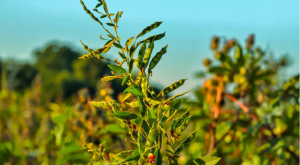ForumIAS announcing GS Foundation Program for UPSC CSE 2025-26 from 19 April. Click Here for more information.
ForumIAS Answer Writing Focus Group (AWFG) for Mains 2024 commencing from 24th June 2024. The Entrance Test for the program will be held on 28th April 2024 at 9 AM. To know more about the program visit: https://forumias.com/blog/awfg2024
Source-This post on Pigeon Pea is based on the article “New protocol can reduce breeding cycle of pigeonpea by 3-5 years, important for nutritional security in drylands” published in “DownToEarth” on 21st February 2024.
Why in the News?
According to the International Crops Research Institute for the Semi-Arid Tropics (ICRISAT), a new fast-breeding method will make it easier for scientists to improve pigeonpea quality more quickly.
What is Pigeon Pea?

| Aspect | Details |
| About | 1. It serves as a significant legume crop and a protein-rich food, mainly consumed as dal in India. 2. In India, it is alternatively known as arhar and tur. |
| Cultivation | Primarily grown in tropical regions, it is predominantly cultivated in the semi-arid areas of India. |
| Climate conditions | 1. Rain– It needs an annual rainfall of 600-650mm, along with moisture during the initial eight weeks and dry conditions during its flowering and pod development phase. 2. Temperature– It can be grown between 26°C to 30°C during the rainy season and 17°C to 22°C in the post-rainy season (November to March). 3. Soil– It can be grown in any soil type, but sandy loam or loam soil is best for its cultivation. Note– It is highly sensitive to low radiation during pod development, so flowering in the monsoon or cloudy weather results in weak pod formation. |
| Intercropping | It is often grown alongside various crops. In India, around 80-90% of pigeonpea is intercropped. |
| Concern | 1. Long growth cycle– Breeding efforts for Pigeonpea have been limited due to its long growth cycle and sensitivity to day length. Only around 250 varieties have been released worldwide in the past sixty years. 2. Disease– Key diseases of pigeon pea include wilt, sterility mosaic disease, phytophthora blight, alternaria blight, and powdery mildew, among others. |
| Health Benefits | It possesses a low glycemic index and boasts abundant levels of thiamine, riboflavin, niacin, vitamin B-6, folate, vitamin A, calcium, zinc, iron, magnesium, and phosphorus. |
| Major Pigeon Pea Producing States | Maharashtra, Madhya Pradesh, Karnataka, Uttar Pradesh, Gujarat and Jharkhand |
What is the significance of the new method developed by the International Crops Research Institute for the Semi-Arid Tropics (ICRISAT)?
1. The new convention promises to significantly reduce the time needed to cultivate new Pigeonpea varieties with desirable traits, ultimately expediting food delivery to dryland communities.
2. The new method speeds up breeding by managing factors like photoperiod, temperature, humidity, and breeding cycle, completing it in 2 to 4 years compared to the traditional 13-year process for Pigeonpea breeding.
UPSC Syllabus- Indian Economy (Agriculture)




